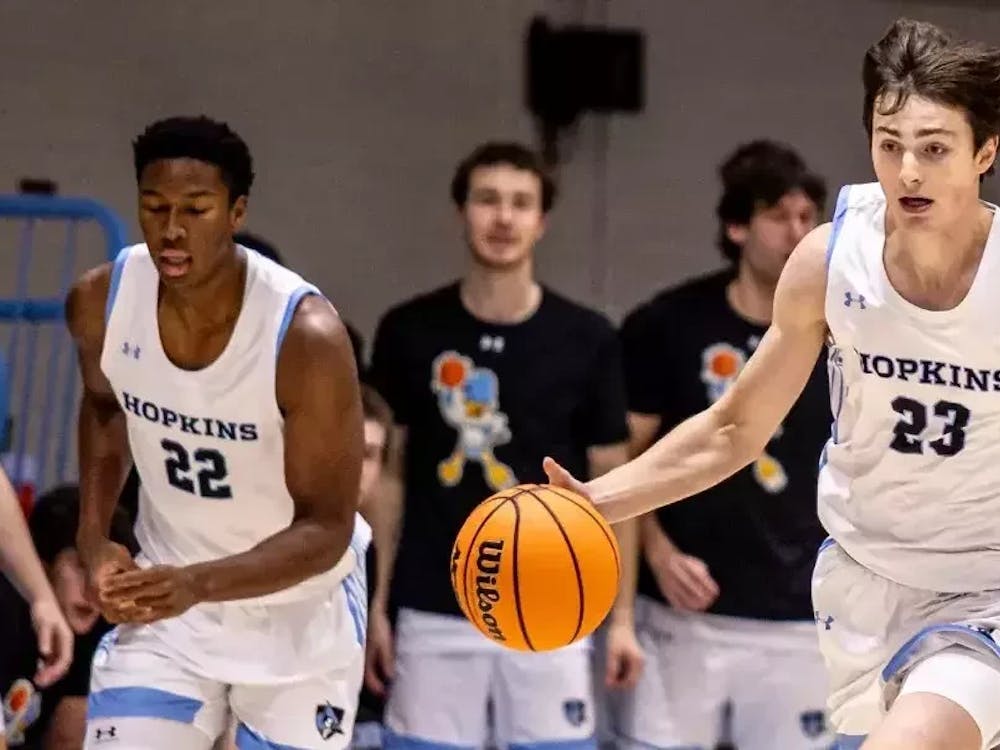
The nicest house on the block is on the market. It’s the perfect addition, with everything from granite countertops to a backyard pool. There’s no denying its appeal, but it sits on the market for over two years as the family patiently waits for someone to hit its lofty price. This trade deadline, the family finally got an offer they accepted. After over two years of trade rumors and a reported asking price of somewhere between two and three first-round picks or assets, the Arizona Coyotes have finally traded Jakob Chychrun.
The twist in the story is that the return for Chychrun, which seemed to be light, fell short of the alleged gaudy asking price. Arizona managed to get just one guaranteed first-round pick and two second-round picks, where one of the second-round picks converts to a first-round pick only if the Ottawa Senators improbably reach the 2023 Eastern Conference Final.
In many circles, Arizona is getting criticized for the return. After all, Vancouver just acquired defenseman Filip Hronek from Detroit for a conditional first-round pick in addition to a second-round pick. Hronek is a good player, but Chychrun is widely regarded as being better and is signed for three playoff races at a bargain cap hit of $4.6 million per year.
For context, at this trade deadline, Jordan Greenway, Max Domi, Nino Niederreiter, Mikael Granlund and Lars Eller all got traded in deals where the primary piece of the return was a second-round pick. However, you would likely be hard-pressed to find a team that wouldn’t prefer Chychrun to Hronek and any one of these players even if both packages would hypothetically cost a first-round pick and two second-round picks.
What happened? Have we violated the principle of no arbitrage? Did Arizona get fleeced, or is there more than meets the eye?
The market for defensemen at this deadline is the perfect case study on how all first-round draft picks aren’t the same in value. This concept was largely brought to the forefront by Professor and Chair of the Math, Computer Science, and Statistics Department at St. Lawrence University Michael Shuckers, who performed one of the earliest draft-pick-value analyses based on how many NHL games a player taken at a given pick was statistically likely to play. The concept has since been advanced, with Carolina Hurricanes Assistant General Manager Eric Tulsky publishing a model for draft pick values in trades.
Since then, Dom Luszczyszyn of The Athletic has applied elements of the Shuckers’ and Tulsky's approaches to model draft pick value in terms of expected wins acquired based on his Game Score Value Added (GSVA) metric, which aims to quantify how many games a player wins or loses their team.
With these models as context, let’s explore the heterogeneity in the value of a first-round pick, beginning with an example. On average, which is a more valuable asset: the sixth overall pick in one year or the 23rd overall pick for two years?
Let’s assign the first overall pick a value of 100 for simplicity. Before we even account for discounting future values to the present, the models have a clear answer.
According to Tulsky’s model, the sixth overall pick has a value of 45.9, and the 23rd overall pick has a relative value of 19.5 in each year, meaning the two 23rd overall picks on average combine to have an expected value of about 39.
Using Luszczyszyn’s model to answer the same question on the more intuitive scale of wins, we observe a similar result: over the course of team-controlled years, a player taken with the sixth overall pick is expected to deliver 7.6 wins whereas a player taken with the 23rd overall pick is expected to deliver 3.6 wins, meaning the two 23rd overall picks would combine to deliver an expected value of 7.2 wins.
The point here is that there are highly asymmetric expected returns to high draft picks. That doesn’t mean you can’t find a superstar with the 23rd overall pick or a bust with the sixth overall pick, but statistically speaking there’s a basis for arguing that you are better off acquiring one high first-round pick than two lower first-round picks.
That brings us back to Arizona’s return in the Chychrun trade. While the exact assortment of packages offered is unknown, it seems that the offer they accepted from Ottawa may indeed be much stronger than it has generally been considered to be. The first-round pick Ottawa sent to Arizona is top-five protected, with the condition that it will carry over unprotected to 2024 if Ottawa earns a top-five selection in 2023, the original year the pick is set to confer.
Much has been made of how Ottawa is currently on a tear, having won six games in a row and sitting just three points out of a playoff spot, but what is simultaneously true and less discussed is that, by standings points, Ottawa is currently the 20th-ranked team in the league. The team has a goal differential on the year that -1.
Ottawa could make the playoffs, but it could also easily miss. Luszczyszyn’s GSVA model pegs Ottawa’s chances of making the playoffs at just 8%, largely reflecting the quantity and quality of teams with which they are competing. Money Puck is less pessimistic, suggesting playoff odds of 24%. There’s a decent spread in those estimates, and the exciting uncertainty is a reminder that it’s what happens on the ice that counts for good reason, but the math suggests that Ottawa is likely to miss the playoffs. If Ottawa misses, there are implications in relation to Arizona’s return.
If Ottawa misses the playoffs, Arizona is guaranteed at worst either a top-16 pick this year or an entirely unprotected first-round pick next year.
In the case of the top-16 pick, the worst-case 16th overall pick would have a Tulsky value of 27.1 and a Luszczyszyn value of 4.7 wins. Of all the possible cases opened up by Ottawa missing the playoffs, this top-16 case represents the worst-case scenario for Arizona. It’s reasonable to assume that three to four of the teams that miss the playoffs will just barely miss by a few points or less in the last few games.
If Ottawa isn’t one of these teams and misses by more than this small margin, suddenly that top-16 pick is looking more like, say, at worst a top-12 pick. That upside is only magnified by the forecast that the 2023 draft class is an abnormally strong one.
It's worth noting that Arizona won’t get the pick this year per the conditions if it ends up being in the top five, but, besides meaning that Arizona won’t get projected number-one-overall pick Connor Bedard with Ottawa’s pick, this isn’t hugely impactful. There’s still a lot of room for immense value with a pick between sixth and 12th. Additionally, in the event that Ottawa’s pick this year ends up being a top-five pick, alternatively getting an entirely unprotected pick next year after Ottawa has just missed the playoffs and had a record bad enough to win the draft lottery is valuable on its own.
While not predetermined, whether Ottawa makes the playoffs this year and whether Ottawa makes the playoffs next year are far from being fully independent events. Sure, Ottawa would make improvements in the offseason, but they already have many big-ticket contracts and won’t have the cap room to make significant changes. Youngsters like Jake Sanderson and Tim Stützle are likely to continue to develop, but key veterans and older players like Claude Giroux could easily start to see time take its toll. Arizona certainly has simulated the probabilities of where Ottawa will finish this year and next and calculated, along with NHL draft lottery probabilities, that Ottawa’s pick likely has a high expected value.
Consider this in the context of Arizona’s likely other offers. It seems logical to assume that more playoff teams were in the bidding for Chychrun than nonplayoff teams, many of which are rebuilding and not currently aiming to make the jump to becoming a playoff team. For a team that makes the playoffs, the pick is at the earliest 17th overall in the draft. For teams going all-in with legit championship aspirations that could reasonably win at least a playoff round, the expected position of their first-round pick is even later.
It’s also worth noting that acquiring Chychrun makes a team non-negligibly better and more likely to have a better record and advance in the playoffs. This is a factor in the Ottawa case as well (although the fairly low playoff odds above do reflect adding Chychrun). It’s very easy to arrive at a point where the first-round pick of teams other than Ottawa in the bidding for Chychrun’s services is in the 20th-to-25th-overall range.
Using the 23rd overall pick for simplicity, we see a real-life situation encompassing our earlier example. The best-case scenarios are Ottawa missing the playoffs and picking high, Ottawa just barely missing the playoffs or going out early, and multiple years of the 23rd overall pick as a proxy for the potential draft position of other teams that may have inquired about Chychrun. In revisiting these three key positions, we can suddenly see the upside of this deal with Ottawa for Arizona.
For Arizona, the best-case-this-year Ottawa sixth overall pick offered a value of 45.9 and an expectation of 7.6 wins. The middle-of-the-road Ottawa 16th overall pick offered a value of 27.1 and 4.1 wins. And the late first-round pick of a playoff team (using the 23rd overall pick for the sake of example) offered a value of 19.5 and 3.6 wins.
Even if a high-end playoff team offered two guaranteed first-round picks, an Ottawa offer consisting of just its own first-round pick was likely already stronger. Analytically, taking Ottawa’s offer that likely contained the best odds at a high first-round pick (less importantly along with the two second-round picks, one of which could conditionally become a late first) was a statistically savvy decision.
None of this is saying that this was a bad deal for Ottawa. The Senators are looking to make the jump to the playoffs, and this is a great way to make it happen by getting a great cost-controlled star who majorly satisfies a team need. Arizona is simultaneously making a wise bet and getting more here than it would seem on the surface.
If Ottawa’s hot streak is more a mirage than a projectable reality and the Senators miss the playoffs, Arizona will be very happy. And if Ottawa makes the playoffs but has a short visit dominated by the history-defining Boston Bruins or another Eastern Conference powerhouse, Arizona will still do fine. It’s possible that both sides just made a win-win deal. Only time will tell what the trade of Chychrun has in store.





